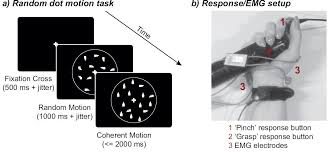Summary:Widespread changes in neural activity enable people to quickly make a decision by ‘turning up the gain in the brain,’ suggests a recent human study. The findings help to resolve a central issue in our understanding of decision-making.
Widespread changes in neural activity enable people to quickly make a decision by “turning up the gain in the brain,” suggests a human study published in eNeuro. The findings help to resolve a central issue in our understanding of decision-making. The ability to optimize the balance between careful and hasty decision-making is critical for survival. However, a compelling explanation for how the brain strikes such a balance, known as speed-accuracy tradeoff (SAT), is lacking.
Carmen Kohl and colleagues reconcile contradictory accounts of the SAT by providing evidence for a model of speeded decision-making that explains both behavioral and neural data. For this study, human participants indicated the direction of moving dots on a screen either as fast or as accurately as possible using a “pinch” or “grasp” response while their brain and muscle activity was recorded.
The researchers found that their results were best explained by a model in which the brain adjusts the signal-to-noise ratio of neural activity in order to tailor the balance between speed and accuracy to the decision-making context.
More: Science Daily





